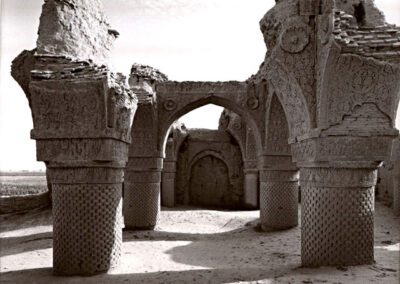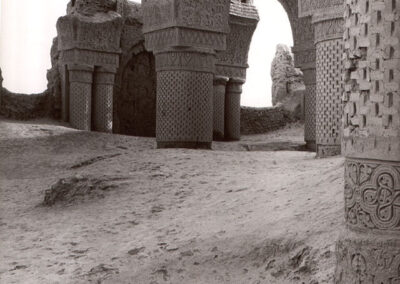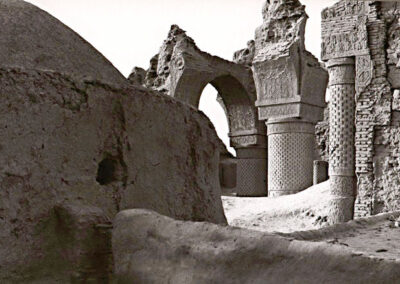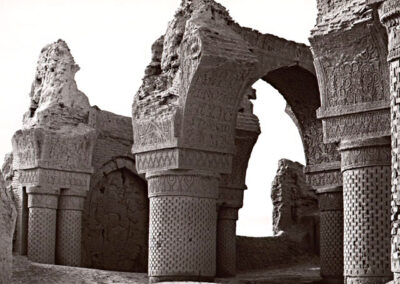
The Association Giovanni Secco Suardo participate in a scientific project aimed to studying and protecting the ancient Mosque of Hadji Piada (VII century), northern Afghanistan, in the neighbourhood of Mazar-I-Sharif.
Artistically and architecturally extraordinary, the Mosque is located in a region that represented, in the past, a nerve centre of the trades between Europe and the Orient and whose main city is Balkh. This building is an exceptional example of religious architecture: forgotten for many centuries to European scientists, it was re-discovered in 1969 by the Soviet scientist Lisa Golombek during a mission.
Considered one of the most ancient Islamic buildings in Afghanistan – and one of the first buildings in eastern Islamic world- the Mosque of Hadji Piada (literally “The Mosque of Pilgrimage”) is developed upon a square layout that measures 20×20 metres. It is also known as the Mosque of Noh Gumbad for its nine domes that used to cover the sanctuary.
Although the domes are now collapsed, the arches that sustained them still exist and, like the majority of the remaining inner surfaces, are decorated with precious and ancient stuccoes, of probable Sassanid influence.
Thanks to an agreement signed in 2006 with the Délégation Archéologique Française en Afghanistan – present in Afghanistan since 1922 – the Associazione Giovanni Secco Suardo is member of the Scientific Committee leading actions of study and of renovation, through mission conducted by an international équipe made up of architects, engineers, archaeologists and restorers.
The activities concerning the project of structural consolidation of the arches were conceived and coordinated by Prof. Ugo Tonietti – department of Costruzioni, Università di Firenze (Italy).
Promoters:
Délégation Archéologique Française en Afghanistan (DAFA) – Ministère des Affaires Etrangères
Donors and Participant Institutions:
Aga Khan Trust for Culture
World Monument Fund
Associazione Giovanni Secco Suardo
University of Florence






